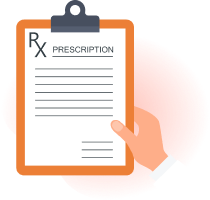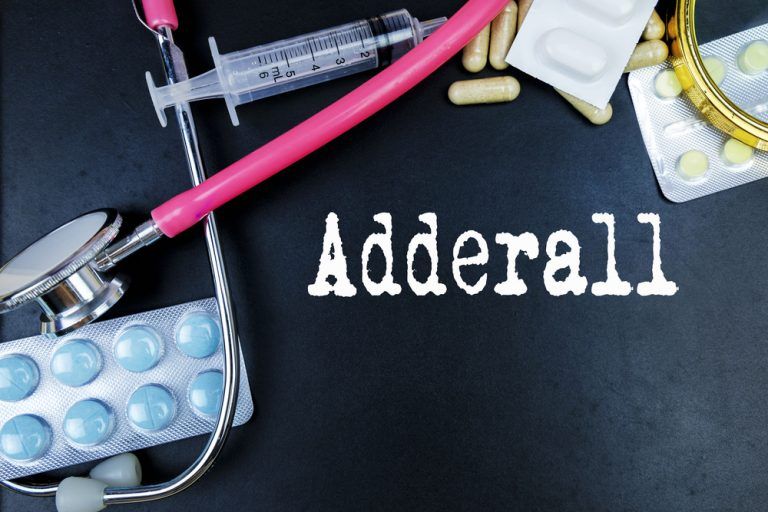Understanding Yeast Infections: A Comprehensive Guide
By: Dr. Caitlin Colvard | MD
Yeast infections are a common but often misunderstood condition that affects millions of individuals, particularly women. While they are typically associated with vaginal discomfort, yeast infections can occur in various parts of the body and in both sexes. This guide provides an in-depth exploration of yeast infections—what they are, why they occur, how they are treated, and what you can do to prevent them.
What Is a Yeast Infection?
A yeast infection, medically known as candidiasis, is caused by an overgrowth of Candida, a genus of yeast that normally resides in small amounts in the body. Candida albicans is the most common species responsible for infections. Under normal conditions, Candida coexists peacefully with bacteria in the mouth, gut, skin, and vagina. However, when the natural balance of microorganisms is disrupted, yeast can multiply rapidly and lead to infection.
Yeast infections are not limited to one location. They can affect the mouth (oral thrush), skin folds, digestive tract, and genitals. While not typically dangerous, they can cause significant discomfort and, if untreated or recurrent, may indicate a more serious underlying issue such as a weakened immune system or uncontrolled diabetes.
Yeast infections are fungal infections caused by Candida overgrowth, commonly affecting the vagina, mouth, skin, and gut. To find discounts on your prescriptions, use SaveHealth, the prescription coupon website. SaveHealth has discounts on prescriptions across America on brand name drugs and generic drugs.
Key Takeaway:
Yeast is naturally present in the body but can become problematic when allowed to multiply unchecked.
Causes and Risk Factors
The body’s balance of microorganisms can be affected by a variety of internal and external factors. When this balance shifts in favor of Candida, a yeast infection can develop.
The most common triggers include:
Antibiotic use: Broad-spectrum antibiotics can kill beneficial bacteria that normally suppress yeast growth.
Hormonal changes: Pregnancy, menstruation, birth control pills, and hormone replacement therapy can alter the vaginal environment.
Uncontrolled diabetes: High blood sugar levels create an environment conducive to yeast growth.
Weakened immune system: Conditions like HIV/AIDS, chemotherapy, or immunosuppressant drugs reduce the body’s ability to keep yeast in check.
Poor hygiene or excessive cleansing: Douching or using scented feminine products can disrupt the natural flora.
Tight or non-breathable clothing: Moist, warm environments around the genitals or skin folds encourage yeast proliferation.
Yeast infections often result from an imbalance in the body’s microbiome, triggered by antibiotics, hormonal fluctuations, immune suppression, and environmental factors.
Key Takeaway:
Understanding and managing the root causes can help prevent yeast infections from recurring.
Types of Yeast Infections
Yeast infections can present differently depending on their location in the body:
Vaginal Candidiasis
This is the most well-known form, affecting nearly 75% of women at least once in their lifetime. Symptoms include itching, burning, redness, a thick white discharge, and discomfort during intercourse or urination.
Oral Thrush
A yeast infection in the mouth, common in infants, elderly individuals, or those with weakened immune systems. It appears as creamy white patches on the tongue, gums, or inner cheeks.
Cutaneous Candidiasis
This affects the skin, particularly in warm, moist areas such as under the breasts, armpits, groin, and between fingers or toes. The rash may be red, itchy, and painful.
Diaper Rash
Infants may develop a yeast-based diaper rash, especially after antibiotic treatment or prolonged exposure to moisture.
Invasive Candidiasis
A rare but serious condition where Candida enters the bloodstream and spreads to organs. It typically occurs in hospitalized or immunocompromised individuals.
Yeast infections can manifest in various forms, including vaginal, oral, skin, diaper rash, and systemic infections.
Key Takeaway:
Recognizing the type and location of a yeast infection is essential for proper treatment.
Symptoms and Diagnosis
The symptoms of a yeast infection vary depending on the infection site but often include redness, itching, swelling, discomfort, and discharge. In vaginal candidiasis, a cottage cheese-like discharge is a hallmark symptom.
Diagnosing a yeast infection generally involves:
Physical Examination: A doctor may inspect the affected area for typical signs of infection.
Microscopy: A swab or skin scraping is taken and examined under a microscope to identify yeast cells.
Culture Tests: In persistent or complicated cases, cultures may be used to determine the exact species and drug sensitivity.
Because some symptoms may overlap with other conditions (such as bacterial vaginosis or sexually transmitted infections), it is essential not to self-diagnose.
Symptoms are site-specific and commonly include itching, redness, and discharge. Diagnosis is based on visual examination and laboratory testing.
Key Takeaway:
Accurate diagnosis ensures appropriate treatment and helps avoid mistaking yeast infections for other conditions.
Yeast Infection Prescription Discounts
Treatment Options
Yeast infections are generally easy to treat with antifungal medications. These treatments come in different forms depending on the type and location of infection.
Vaginal Yeast Infections
Treatment includes:
Over-the-counter antifungal creams: Clotrimazole, miconazole, or tioconazole are available as creams or suppositories.
Prescription antifungal pills: Fluconazole (Diflucan) is a common oral option, often effective with a single dose.
Oral Thrush
Treated with antifungal lozenges, mouth rinses (nystatin), or systemic medications if persistent.
Skin Infections
Topical antifungal creams such as ketoconazole or clotrimazole are typically used. In severe or widespread cases, oral antifungals may be prescribed.
Invasive Candidiasis
Requires hospitalization and administration of intravenous antifungal agents like voriconazole, amphotericin B or echinocandins.
Patients should complete the full course of treatment, even if symptoms resolve early, to prevent recurrence.
Antifungal medications—topical or oral—are the mainstay of treatment. Severe cases may need systemic therapy.
Key Takeaway:
Prompt and complete treatment is crucial to eliminate the infection and prevent relapse.
Recurrent Yeast Infections
Recurrent vulvovaginal candidiasis is defined as four or more infections in a year. It can be physically and emotionally distressing and may indicate a need for long-term management strategies.
Common contributing factors include:
Persistent hormonal imbalances
Chronic antibiotic use
Undiagnosed diabetes
Sexual transmission (although yeast infections are not classified as STIs, reinfection can occur between partners)
Overuse of antifungals, leading to resistance
Long-term treatment may include:
Monthly fluconazole for six months
Dietary changes to reduce sugar and refined carbs
Probiotics to restore healthy flora
Investigating and managing underlying medical conditions
Recurrent infections suggest an underlying imbalance or contributing factor and require tailored, long-term treatment strategies.
Key Takeaway:
If yeast infections keep returning, deeper investigation and extended management may be needed.
Yeast Infections in Men
Although less common, men can also get yeast infections, usually on the penis (balanitis). Risk factors include uncircumcised penis, poor hygiene, diabetes, or sexual contact with an infected partner.
Symptoms include itching, redness, white patches on the foreskin, and discomfort during urination or sex.
Treatment mirrors that of female yeast infections, involving antifungal creams or oral medications.
Men should avoid intercourse until the infection resolves to prevent reinfection or discomfort for both partners.
Men can develop yeast infections, particularly under certain conditions. Symptoms are localized and manageable with antifungal treatment.
Key Takeaway:
Though less frequent in men, yeast infections should be taken seriously and treated promptly to avoid spread and recurrence.
Yeast Infections During Pregnancy
Pregnancy increases the risk of yeast infections due to hormonal changes that affect vaginal pH and immune function. Though they are not harmful to the fetus, they can cause significant maternal discomfort and increase the risk of infection during delivery if untreated.
Treatment during pregnancy is typically limited to topical antifungals, as oral fluconazole is generally avoided due to potential risks to fetal development.
It's important for pregnant individuals to consult a healthcare provider for appropriate treatment and to avoid over-the-counter medications without guidance.
Pregnancy increases yeast infection susceptibility. Treatment requires caution and often involves only topical therapies.
Key Takeaway:
Yeast infections in pregnancy are common and manageable with safe, doctor-approved antifungal treatments.
Lifestyle and Home Remedies
In addition to medical treatments, lifestyle adjustments can support healing and prevent future infections.
Beneficial habits include:
Wearing breathable, cotton underwear
Avoiding tight-fitting clothing
Wiping front to back after using the restroom
Avoiding douches and scented hygiene products
Managing blood sugar levels
Reducing sugar intake, which feeds yeast
Taking probiotics with Lactobacillus strains
Although natural remedies such as tea tree oil, garlic, or yogurt are popular, evidence supporting their effectiveness is limited and sometimes contradictory. Always consult a healthcare provider before trying alternative therapies.
Lifestyle changes can reduce yeast infection risk and improve recovery. Natural remedies should be used cautiously.
Key Takeaway:
Prevention starts with hygiene, diet, and awareness. Home care can support—but not replace—medical treatment.
When to See a Doctor
Yeast infections are often manageable at home, but medical consultation is warranted in certain scenarios:
First-time infections (to confirm diagnosis)
Severe symptoms or pain
Recurrence within a short period
Infections during pregnancy
Signs of systemic infection (fever, chills, fatigue)
No improvement after OTC treatments
Delaying medical care can lead to complications, unnecessary discomfort, and potential misdiagnosis of other conditions.
Seek medical advice when infections are severe, recurrent, during pregnancy, or if symptoms don’t resolve with standard treatment.
Key Takeaway:
Timely professional care ensures accurate diagnosis and appropriate treatment.
The Role of the Microbiome
The human microbiome—trillions of microorganisms living in and on our bodies—plays a crucial role in preventing infections, including candidiasis. Healthy gut and vaginal flora keep Candida in check through competition and immune modulation.
Disrupting this balance, particularly through antibiotics or poor diet, can create opportunities for yeast overgrowth.
Emerging research supports the use of probiotics, prebiotics, and dietary interventions to maintain or restore a healthy microbial balance and reduce yeast infection frequency.
A healthy microbiome acts as a natural defense against yeast infections. Disruptions in this balance are a key trigger for overgrowth.
Key Takeaway:
Supporting your microbiome through diet, probiotics, and cautious use of medications helps prevent yeast infections.
Yeast Infections
Yeast infections are widespread, treatable, and often preventable fungal infections that stem from a disruption in the body’s natural microbial balance. While most cases are mild and respond well to antifungal treatments, recurrent or severe infections may point to underlying health issues that warrant further medical attention.
Addressing risk factors, adopting preventive hygiene habits, and supporting the microbiome are essential steps in managing candidiasis holistically. Awareness, early intervention, and a proactive approach to health can significantly reduce the discomfort and disruption caused by these common infections.
Yeast infections are fungal overgrowths of Candida, commonly affecting the vagina, mouth, skin, and gut. They are triggered by factors like antibiotics, hormonal changes, and immune suppression. Though typically treatable with antifungals, persistent or recurrent infections require deeper investigation. Prevention lies in maintaining hygiene, supporting the microbiome, and managing contributing conditions like diabetes. Consulting a healthcare provider ensures accurate diagnosis and effective treatment.
Final Key Takeaway
Yeast infections are a signal from your body—listen to them. Understand the causes, treat them properly, and take preventive steps to maintain your health and well-being.
Source:
Centers for Disease Control and Prevention (CDC), Mayo Clinic, Cleveland Clinic, National Institutes of Health (NIH), and Johns Hopkins Medicine. (2023–2024). Candidiasis (Yeast Infections): Causes, Symptoms, Diagnosis, Treatment, and Prevention. Retrieved from:
CDC - Candidiasis
Mayo Clinic - Yeast infection (vaginal)
Cleveland Clinic - Yeast Infections
NIH - Candida Infections
Johns Hopkins Medicine - Candidiasis

Related Articles

Erectile Dysfunction Prescriptions: Comparing ED Medication Options
Choosing the right erectile dysfunction medication can...

The Ultimate Guide to ADHD Medications: 8 Things to Consider
Finding the right ADHD prescription can feel overwhelming...

The Pill That Changed Pressure: Popular Hypertension Medications and How They Shape Modern Medicine
Nearly half of adults have hypertension, and many...

Pills for Memory: The Medications That Define Dementia Care Today
Dementia medications: For decades, dementia, especially...
